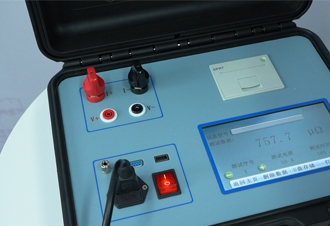 English
English


transformer coil resistance
Understanding Transformer Coil Resistance Insights and Implications
Transformers are essential components in electrical engineering, serving to convert voltages from one level to another. One of the critical factors influencing a transformer's performance is the resistance of its coils, which can significantly impact its efficiency and functionality. This article aims to explore the concept of transformer coil resistance, its causes, effects, and methods for optimization.
What is Transformer Coil Resistance?
Transformer coil resistance refers to the opposition that a coil presents to the flow of electric current. It is primarily attributed to the material used in the winding (often copper or aluminum), the length of the wire, and the cross-sectional area of the coil. The resistance can be calculated using the formula
\[ R = \frac{\rho L}{A} \]
where \( R \) is the resistance, \( \rho \) is the resistivity of the material, \( L \) is the length of the wire, and \( A \) is its cross-sectional area. To ensure optimal transformer performance, it is crucial to minimize this resistance.
Factors Influencing Coil Resistance
1. Material Properties The choice of material significantly affects coil resistance. Copper is commonly preferred due to its excellent conductivity and lower resistivity compared to aluminum. However, aluminum is lighter and more cost-effective, making it suitable for specific applications.
2. Temperature Resistance in electrical conductors increases with temperature. As transformers operate, the coils can heat up due to losses—predominantly from copper losses in the winding. This temperature rise must be adequately managed to prevent overheating, which can lead to significant efficiency losses or even failure.
3. Winding Design The geometry of the coil, including the number of turns and the orientation, can impact resistance. More turns can increase the overall length of the wire, thus increasing the resistance. Engineers must find a balance between the number of turns required for the desired electromagnetic induction and keeping the resistance manageable.
4. Frequency of Operation High-frequency operations can lead to additional phenomena such as skin effect, where the current tends to flow near the surface of the conductor, effectively increasing the resistance at higher frequencies. This consideration is essential in high-frequency transformers, such as those used in radio frequency applications.
Effects of High Coil Resistance
transformer coil resistance

High resistance in transformer coils can lead to several adverse effects, including
- Increased Heat Generation Higher resistance leads to more heat generation due to I²R losses (where I is the current). Excessive heat can damage insulation and other critical components, potentially leading to transformer failure.
- Reduced Efficiency Increased coil resistance directly impacts the transformer's efficiency. A significant portion of the energy is lost as heat rather than being transmitted as usable electrical power.
- Voltage Drop High resistance can cause a notable voltage drop across the winding, impairing the voltage regulation of the transformer. This can lead to operational issues in the connected electrical systems.
Optimizing Transformer Coil Resistance
To enhance the efficiency and longevity of transformers, it is crucial to manage coil resistance effectively. Some strategies include
1. Using High-Quality Conductors Investing in high-quality copper or aluminum can significantly reduce resistive losses. Additionally, ensuring that the conductors are appropriately sized and configured can minimize resistance.
2. Proper Cooling Techniques Designing transformers with effective cooling mechanisms, such as oil cooling or air ventilation, can help maintain optimal operating temperatures and reduce resistance-related losses.
3. Periodic Maintenance and Testing Regular checks on transformer conditions can help identify issues like insulation breakdown or excessive heating early on, allowing for timely interventions.
4. Modern Technology Utilizing advanced materials and design techniques, such as litz wire or improved winding configurations, can help reduce resistance and enhance performance.
Conclusion
Understanding and managing transformer coil resistance is pivotal for optimizing transformer efficiency and reliability. By selecting appropriate materials, designing innovative cooling solutions, and adopting modern engineering practices, engineers can mitigate the adverse effects of coil resistance, ensuring that transformers operate reliably within their intended applications. As the demand for efficient power transmission continues to grow, so will the importance of addressing coil resistance in transformer design and operation.
-
Differences between open cup flash point tester and closed cup flash point testerNewsOct.31,2024
-
The Reliable Load Tap ChangerNewsOct.23,2024
-
The Essential Guide to Hipot TestersNewsOct.23,2024
-
The Digital Insulation TesterNewsOct.23,2024
-
The Best Earth Loop Impedance Tester for SaleNewsOct.23,2024
-
Tan Delta Tester--The Essential Tool for Electrical Insulation TestingNewsOct.23,2024





